Vought F-8E
Crusader
Limited Edition
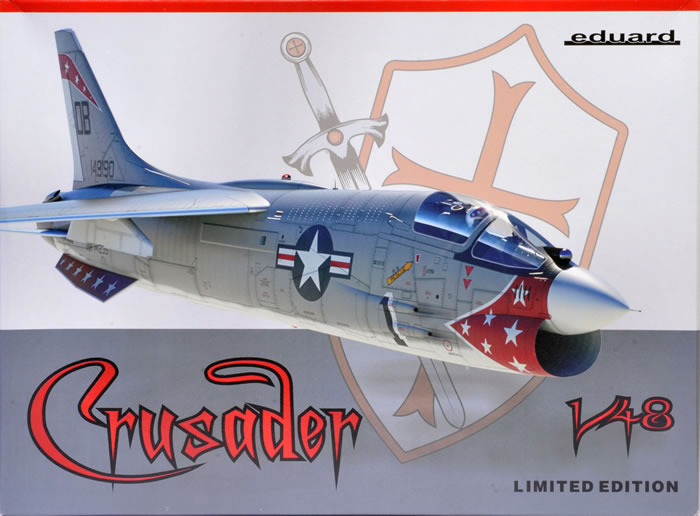
Eduard, 1/48 scale
S
u m m a r y : |
Description and Item No.: |
Eduard Kit No. 11110 - Crusader Limited Edition |
Contents and Media: |
106 parts in grey plastic (including 14 not used); 14 parts in clear plastic (including 3 not used); eight parts in grey resin; one coloured and one brass photo-etched fret; self-adhesive die-cut masking sheet; one decal sheet covering five subjects |
Price: |
USD$89.95 plus postage from Eduard
USD$71.99 plus postage from Squadron
£58.60 (£48.83 Export) plus postage from Hannants |
Scale: |
1/48 |
Review Type: |
First Look |
Advantages: |
Fine crisp surface textures including recessed panel lines; high level of detail; high quality photo-etched and resin upgrades. |
Disadvantages: |
All the plastic parts in one bag (possible scuffing in transit). |
Recommendation: |
Hasegawa's F-8E is the only mainstream Crusader available in 1/48 scale, and although it is a very nice kit, it was a little lacking in the cockpit.
Eduard's Limited Edition package adds meaningful resin and photo-etched parts to Hasegawa's simple sprues to deliver a best-of-both-worlds result. The five colourful decal options by Furball Aero Design are a great addition too.
If you want a Crusader with crisp, petite surface features AND a high level of detail, Eduard now gives you a solution in one box!
Highly Recommended. |
Reviewed by Brett Green

Eduard's 1/48 scale Crusader Limited Edition is available online from Squadron.com
Background
The Vought F-8 Crusader (originally F8U) was a single-engine, supersonic, carrier-based air superiority jet aircraft built by Vought for the United States Navy and Marine Corps, replacing the Vought F7U Cutlass, and for the French Navy.
The first F-8 prototype was ready for flight in February 1955.

The F-8 served principally in the Vietnam War. The Crusader was the last American fighter with guns as the primary weapon, earning it the title "The Last of the Gunfighters". *
The Crusader in 1/48 scale
Hasegawa, Monogram and ESCI all released 1/48 injection moulded Crusader kits.
Of these, the best is the Hasegawa kit from early 2003. It is the F-8E variant.
The kit provided plenty of useful choices for the modeller including optional position wing (up or down), separate flaps and slats, Zuni rockets and mounts for additional ordnance (but the ordnance itself is not supplied).
Detail in the cockpit and landing gear is fairly basic. Fuselage and wing mounted navigation lights are moulded solid on the grey plastic, but clear parts are supplied if the modeller wants to drill out, or carve off, the solid plastic lights.
Surface detail is excellent. Vents, hatches and panel lines are crisp and fine. Some of the detail is a little soft on the bottom of the fuselage, but even in this area the features are acceptable. However, there are a large number of ejector pin marks, both raised and recessed, in visible areas of many of the smaller parts.
Engineering of the kit is straightforward. I test-fitted the Hasegawa kit when I originally reviewed it in 2003. Without glue and even without tape, the fuselage halves matched up without steps or gaps. The wing sits nicely over the fuselage, lining up well with the top of the fuselage at both the front and the rear.
The intake ducting was another potentially tricky area. Hasegawa has done extremely well here. The ducting is positively located with two square lugs inside the fuselage. The lip of the duct fits flush against the back of the intake. Only the most fastidious modeller (and one with a lot of time on his hands) will bother with filler here.
The wing is secured with three poly caps in the top wing well of the fuselage. Similarly, the horizontal tailplanes are movable thanks to their connection via poly caps. I am a little concerned that this method of construction may not be secure enough for these large parts. If this turns out the be the case, it will be relatively simple to underpin these areas with stronger glue and/or reinforcement rods.
Although a two-part canopy is supplied, it can only be displayed closed without modification. This is due to the deeply recessed locating positions in the fuselage. The canopy hinges are moulded as part of the clear part. These hinges click securely into the locating recesses in the fuselage, but they do not permit the canopy to be displayed in any position other than closed. It might have been nicer for Hasegawa to supply two inserts for the fuselage area immediately behind the canopy - one with the recesses in the closed position, and one positioning the canopy open.
In recent years, Eduard has been supplementing their own original kits with limited edition packaging of other companies’ products plus BRASSIN resin, Eduard photo-etch, masks and colourful new decals. A number of these have been Hasegawa sprues.
This is an excellent pairing as Hasegawa's kits, while they feature excellent surface textures and are generally very accurate, are sometimes a bit lacking in the cockpit and undercarriage departments.
The latest of these is Eduard's "Crusader" package based on Hasegawa's kit.
Hasegawa's plastic sprues are light grey. There are only 106 plastic parts, and of these 14 are marked not for use. 14 clear parts are also included, with three marked not for use.
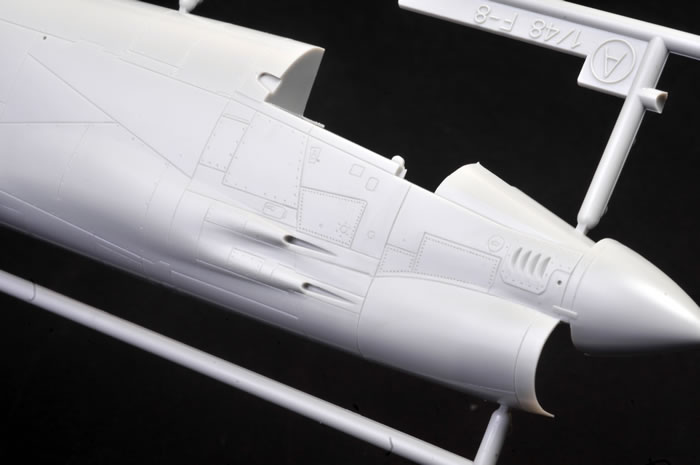
The eight BRASSIN resin parts are the ejection seat, pilot's back and seat cushions, headrest, main wheels with separate resin brakes plus the nose wheel.
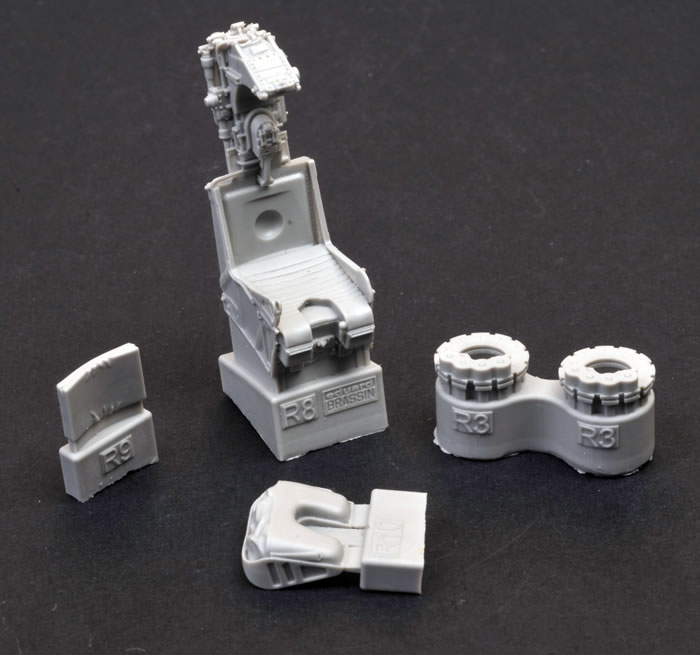
Casting quality and detail of all the BRASSIN parts is excellent.
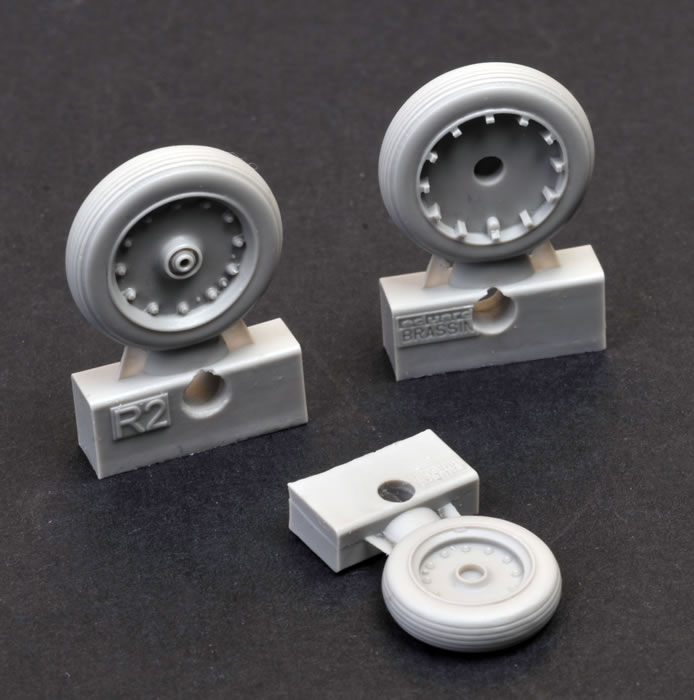
The coloured photo-etched parts are destined for the cockpit, including side consoles, instrument panel, harness straps, ejection pull handles and other small details.
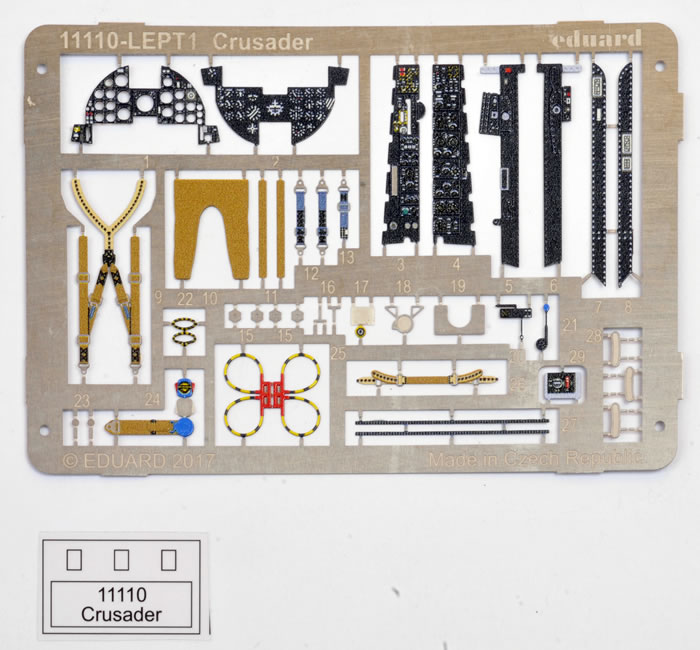
The brass fret adds yet more detail.
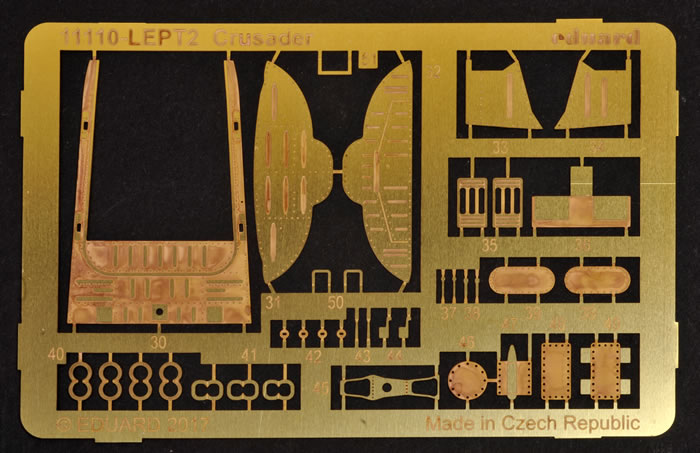
The canopy is provided in two parts. Eduard acknowledges the open canopy issue in the instructions, where they suggest that the back of the main canopy part including the hinges should be thinned from the inside, and the recesses for the hinges on the fuselage spine should be extended to permit the canopy to be fitted in the open position.
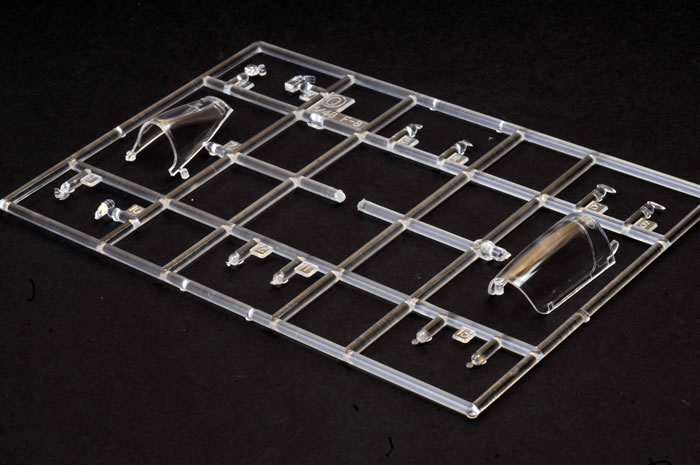
Somehow, Hasegawa has cunningly avoided the dreaded raised seam line down the centreline of this canopy. At least this will save some heartache in the modeller's day.
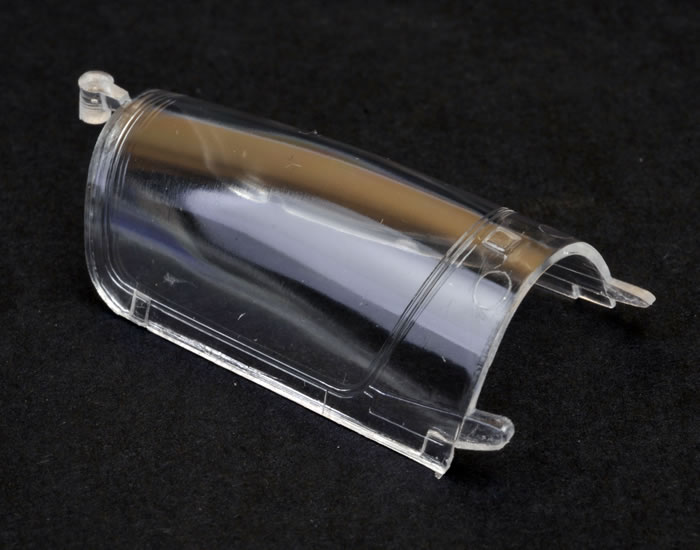
Self-adhesive die-cut masks are provided for the canopies and the wheels.
Markings
Markings are provided for five machines with bright markings. The basic colours for all five options are the standard Vietnam-era US Navy scheme of Light Gull Grey over White, but the nose and tail markings make for some very interesing subjects.
One large decal sheet is included, which also contains stencil markings. The artwork and research is by Furball Aero Design.
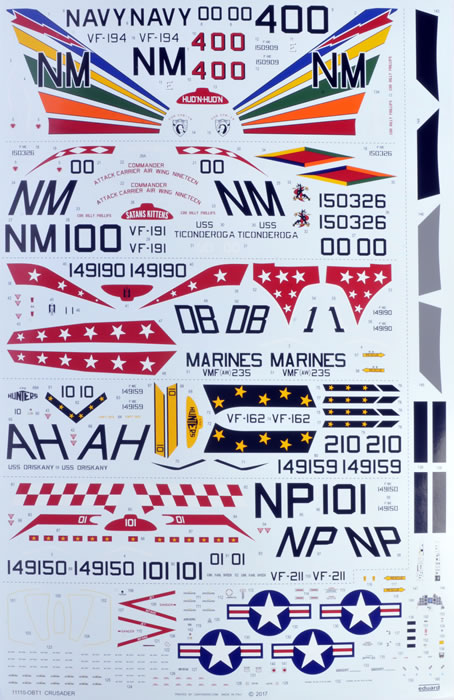
The decals have been perfectly printed by Cartograf.
Hasegawa's F-8E is a very nice kit, but it was certainly lacking in the cockpit.
Eduard's Limited Edition package adds meaningful resin and photo-etched parts to Hasegawa's simple sprues to deliver a best-of-both-worlds result.
The five colourful decal options by Furball Aero Design are a great addition too.
If you want a Crusader with crisp, petite surface features AND a high level of detail, Eduard now gives you the solution in one box!
Highly Recommended.
* Historical summary courtesy of Wikipedia
Thanks to Eduard for the sample.
Review Text and Images Copyright © 2017 by Brett Green
Page Created 15 June, 2017
Last updated
17 June, 2017
Back to HyperScale Main Page
Back to Reviews Page

|
Home
| What's New |
Features |
Gallery |
Reviews |
Reference |
Forum |
Search